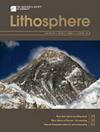Holocene Earthquake Cycles of an Active Tectonic Block Boundary Fault Zone: A Case Study in the Qilian–Haiyuan Fault Zone, Northeastern Tibet Plateau
IF 1.7
4区 地球科学
Q3 GEOCHEMISTRY & GEOPHYSICS
引用次数: 0
Abstract
Fault zones along active tectonic block boundaries are a significant source of devastating continental earthquakes. Strong earthquakes produce disruptions of sediment and induce characteristic sediments near the fault, which serve as valuable sedimentary evidence for identifying and dating of paleoearthquakes. In this study, we aimed to reconstruct the earthquake history of the Qilian–Haiyuan fault zone in the northeastern Tibetan Plateau during the Holocene. We reanalyzed forty-four trenches and used the sedimentary sequences, event indicators, and age constraints to determine the earthquake history. Our analysis revealed the paleoearthquakes of 6 subsidiary faults of the Qilian–Haiyuan fault zone with accurate event ages and rupture extents. Based on the spatial and temporal distributions of strong earthquakes since 10 ka, we identified five earthquake clusters around the central-eastern Qilian–Haiyuan fault zone including seven rupture cascades where the earthquakes migrated gradually from east to west. The existing seismic gap reveals that the latest migration may not yet be complete and suggests a high probability of M ≥ 7 earthquakes occurring on the Jinqianghe fault, Maomaoshan fault, and the central part of the Lenglongling faults. We concluded that, in order to better understand earthquake cycles and seismic hazards, it is important to consider a fault zone as a whole, including multiple faults and their interaction on the earthquake triggering between nearby faults.活动构造块边界断裂带的全新世地震旋回——以青藏高原东北部祁连-海原断裂带为例
沿活动构造块边界的断裂带是破坏性大陆地震的重要震源。强震使断层附近的沉积物发生破坏,形成特征沉积物,为古地震的识别和定年提供了有价值的沉积证据。本研究旨在重建青藏高原东北部祁连-海原断裂带全新世的地震历史。我们重新分析了44条海沟,并利用沉积序列、事件指标和年龄约束来确定地震历史。通过分析,揭示了祁连-海原断裂带6条附属断裂的古地震,具有准确的事件年龄和破裂程度。根据10 ka以来强震的时空分布特征,确定了祁连-海原断裂带中东部的5个地震群,包括7个破裂级联,地震由东向西逐渐迁移。现有的地震间隙表明,最近的迁移可能尚未完成,并提示在金强河断裂、毛毛山断裂和冷龙岭断裂中部发生M≥7级地震的可能性很大。我们的结论是,为了更好地理解地震周期和地震灾害,重要的是将断裂带作为一个整体来考虑,包括多个断层及其对附近断层之间地震触发的相互作用。
本文章由计算机程序翻译,如有差异,请以英文原文为准。
求助全文
约1分钟内获得全文
求助全文
来源期刊

Lithosphere
GEOCHEMISTRY & GEOPHYSICS-GEOLOGY
CiteScore
3.80
自引率
16.70%
发文量
284
审稿时长
>12 weeks
期刊介绍:
The open access journal will have an expanded scope covering research in all areas of earth, planetary, and environmental sciences, providing a unique publishing choice for authors in the geoscience community.
 求助内容:
求助内容: 应助结果提醒方式:
应助结果提醒方式:


